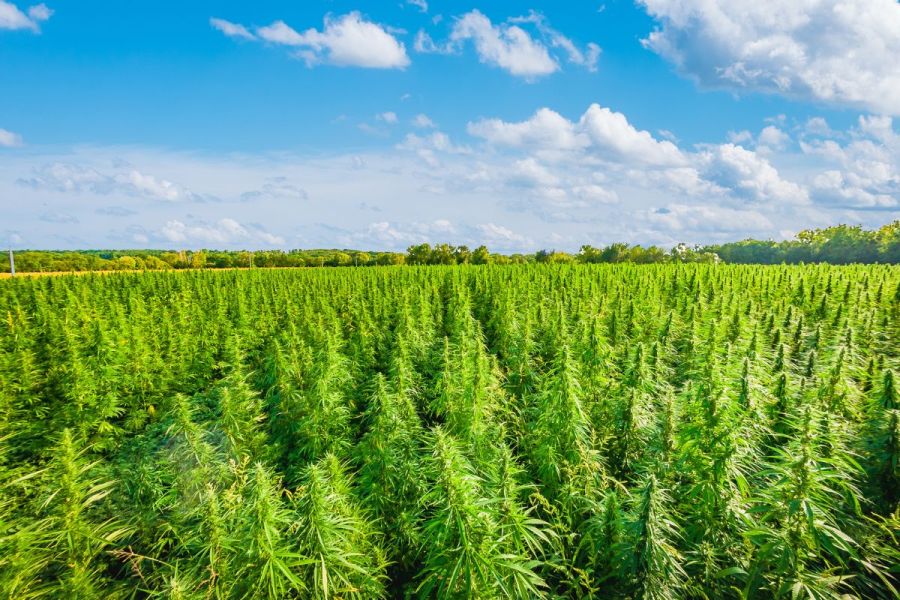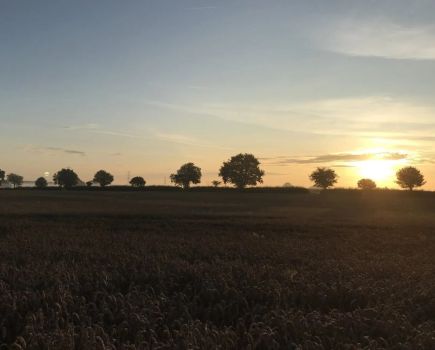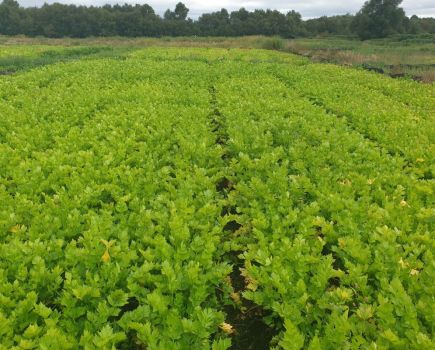With more than 10,000 applications from textiles to construction materials, plus offering a raft of environmental benefits, it’s time to ask, why isn’t the UK head over heels for hemp? CPM takes a dive into the world of Cannabis sativa.
“Hemp delivers four times the CO2 sequestration compared with the same area of forestry.”
By Janine Adamson
Let’s be clear from the off – despite belonging to the same species, hemp and marijuana are two very different crops. Because where science doesn’t differentiate between the two, the law does.
Legally, it’s all down to tetrahydrocannabinol (THC) content – a psychoactive compound found in the cannabis plant. Hemp is simply cannabis that contains 0.3% or less THC content, so no highs involved.
Many moons ago, the UK championed this intriguing crop. In fact, King Henry VIII made hemp cultivation compulsory by law; farmers could even pay their taxes with hemp. But following the industrialisation of the agriculture and textile industries, it found itself out of favour. And now, despite retaining its countless benefits, it’s become a regulatory hot potato.
“Cultivating industrial hemp constitutes a ‘special purpose’ under the Misuse of Drugs Act 1971 (MoDA), meaning it’s permitted once a licence is obtained from the Home Office,” explains Savills’ Joe Lloyd.
“There’s a wide range of varieties that can be grown and careful attention should be paid to their individual characteristics. Namely the variety should comply with the UK definition of industrial hemp – contain no more than 0.2% THC, and be on the ‘common catalogue’. The policy surrounding licensing perhaps isn’t ideal, but is achievable.”
It’s important to note that only the fibre/stalk and seed can be used under an industrial hemp licence and it’s illegal to harvest, process, extract or transport the leaf and flower. But nonetheless, Joe believes industrial hemp offers numerous benefits for growers, as well as an opportunity for healthy returns.
“The industrial hemp licence is reasonably accessible, costing £580 for a new, three-year licence. And where the opportunity has really leapt forward in recent years is in consumer preferences – hemp addresses many consumer concerns such as reducing pesticide use or improving carbon sequestration. This is where industrial hemp differentiates itself when compared with other niche crops,” he says.
Inspecting the benefits more closely, firstly, there are quite literally thousands of applications for industrial hemp meaning the market opportunities should be vast. Uses included bioplastics, construction materials, textiles, paper, panels for the automotive industry, food supplements, livestock bedding and biofuels.
Entrepreneur Steve Glover runs the British Hemp Co and UK Hemp in Wiltshire which includes a processing facility and licensed seed distribution arm. As well as producing hemp seed oil, protein powder, hulled seed and fibre, his processing facilities are available for other growers to access too.
Steve says although there are many applications for hemp, the starting point should be to identify an end use. “Depending on your chosen market, you have to select either a fibre or seed variety, both of which must be certified and on the common catalogue. We believe the most economical entry point for hemp is to grow for solid fuel or biomass, it’s a good business to be in.
“Conversely, growing a crop for seed fits into a conventional arable rotation really well due to its short lifecycle,” he says. “Approved seed varieties such as Finola are short and stocky and can be harvested using a standard farm combine; no specialist machinery is involved. Finola is well suited to the UK climate.”
If opting to grow for seed, Steve advises a minimum of 10ha should be allocated to hemp to make the exercise worthwhile. But regardless, he says one of his business’ aims is to help new growers to understand the crop, backed by knowledge gleaned from growing on 170ha and supplying products to 200 UK shops.
One grower who’s producing hemp for seed is Hugh Wrangham from Northumberland. After successfully obtaining a licence, he sowed his first crop of hemp in 2021 in a bid to diversify the 600ha farm’s rotation.
He agrees that although growing for fibre and textiles offers great potential, as a cereal farmer, it’s easier to choose seed varieties, his preference being Finola. “It’s definitely the simpler option until there are processing facilities for fibre applications,” explains Hugh.
Now into his third season of growing hemp, alongside a rotation of winter wheat, winter barley, winter rye, oilseed rape and spring beans, he says he’s pretty convinced by the benefits.
“Grown as a sustainable break crop, hemp delivers four times the CO2 sequestration compared with the same area of forestry, and delivers an additional revenue stream through the sale of British-grown ‘super-food’ hemp seed products.”
According to Hugh, although it’s not a hard crop to grow, it can prove risky during early establishment. “Hemp prefers a warm soil temperature with a weed-free, uniform seedbed. Giving it a good start is really essential so we tend to run through with a sub-soiler prior to drilling to break up any compaction; it’s then in with the Väderstad drill to plant into a shallow seedbed.”
He says because the first month is slow, this is when the crop is most at risk. After that, rapid growth kicks in and there’s little else to do until the seed ripens in September. “We use a Claas Lexion combine with a draper header and despite horror stories, it’s actually easier to harvest than rye,” explains Hugh.
With the decision to outsource production of hemp seed oil, Hugh wanted to install a seed dehulling production line. The solution lay in a McArthur Agriculture-supplied drier plus kit from the JK Machinery range.
Post-harvest processing begins with the harvested hemp seed being dried to 8% moisture, then seed is graded using a JCM grading sieve cleaner.
Seed is then passed through a JK Machinery’s JHI 05 Impact Dehuller to produce a mix of hemp hearts (dehulled seed ), the empty hulls and whole hemp seeds. Remaining whole hemp seeds are collected and put back through the dehuller, says Hugh.
After passing through the sieve cleaner a final time, the remaining material goes over a JK Machinery JGC 03 Gravity Concentrator designed to separate material based on its specific gravity. Having completed this process the finished hemp hearts are then stored prior to sale.
“This year we’ve semi-automated our dehulling facility. This enables us to increase output and produce dehulled hemp hearts at a volume which allows us to offer increasingly good value to our customers, says Hugh.
Savills’ Alex Bragg says even with on-farm solutions such as this, there’s a distinct lack of UK processing capacity and confusion surrounding end markets. “I think the reason why hemp has had a bad press in the past is some farmers have grown it without a specific end market in mind. Which goes against how they manage other crops in the rotation.
“Then, if you look at countries such as France, hemp is grown in large quantities for high-end commercial purposes such as car interior panels. This commands a premium and is something the UK could achieve if we secured a similar blue-chip end user with significant investment capabilities,” he says.
“That, plus finding a way to legally utilise all parts of the crop (flower, leaf, stem and seed), and throwing carbon credits into the mix, could make industrial hemp a silver bullet for UK agriculture.”
Tom Woodcock from Hempen Organic says there’s a huge demand for organically-certified UK-grown hemp seed which isn’t currently being met. “We have to work together to address the production barriers, which are mainly surrounding licensing, agronomic guidelines, and route to market.
“The problem with licensing is that a grower can only apply in January, and by the time the application has been processed, it can be too late to order seed for year one because it’s currently imported from Europe,” says Tom.
As for agronomics, he believes there’s still much to learn, particularly regarding the crop’s legacy effect within the rotation. “We believe this is due to hemp’s long taproot which improves soil structure and water infiltration, and adds organic matter. Studies are taking place with Reading University to try and quantify these benefits.”
Like Hugh, Tom stresses that the number one aspect to get right is establishment. “Sowing is so important – technique and timing. Hemp should be drilled at a very shallow depth (10-20mm) when temperatures reach around 14oC.”
And although no conventional plant protection products are required meaning hemp seed can be produced organically, Tom says such varieties require feeding with nitrogen at a similar rate to an OSR crop. Altogether, he believes harvesting 1-1.5t/ha from a seed crop is a viable proposition, and should make hemp competitive when compared with other crops.
This article was taken from the latest issue of CPM. Read the article in full here.
For more articles like this, subscribe here.
Sign up for Crop Production Magazine’s FREE e-newsletter here.




